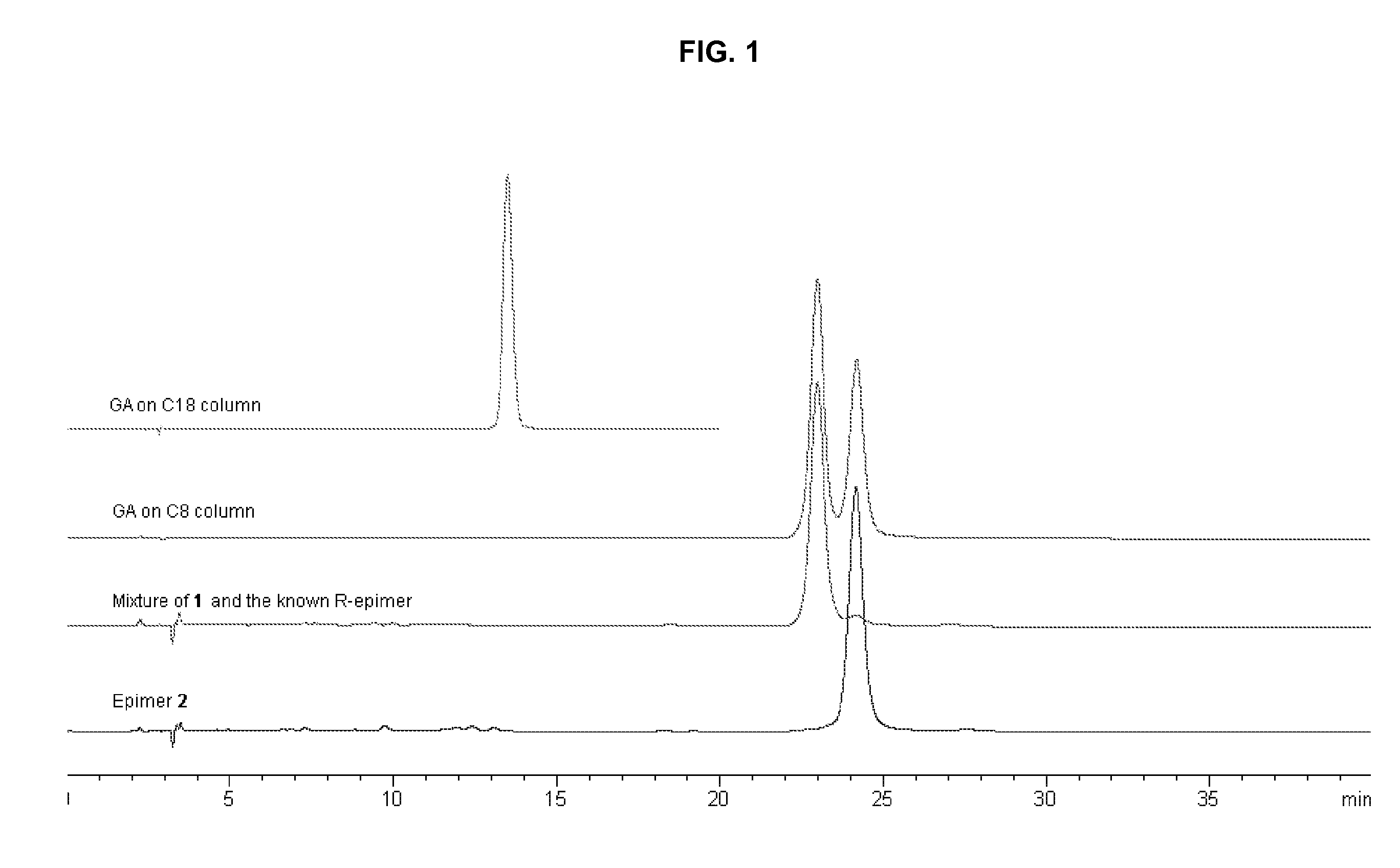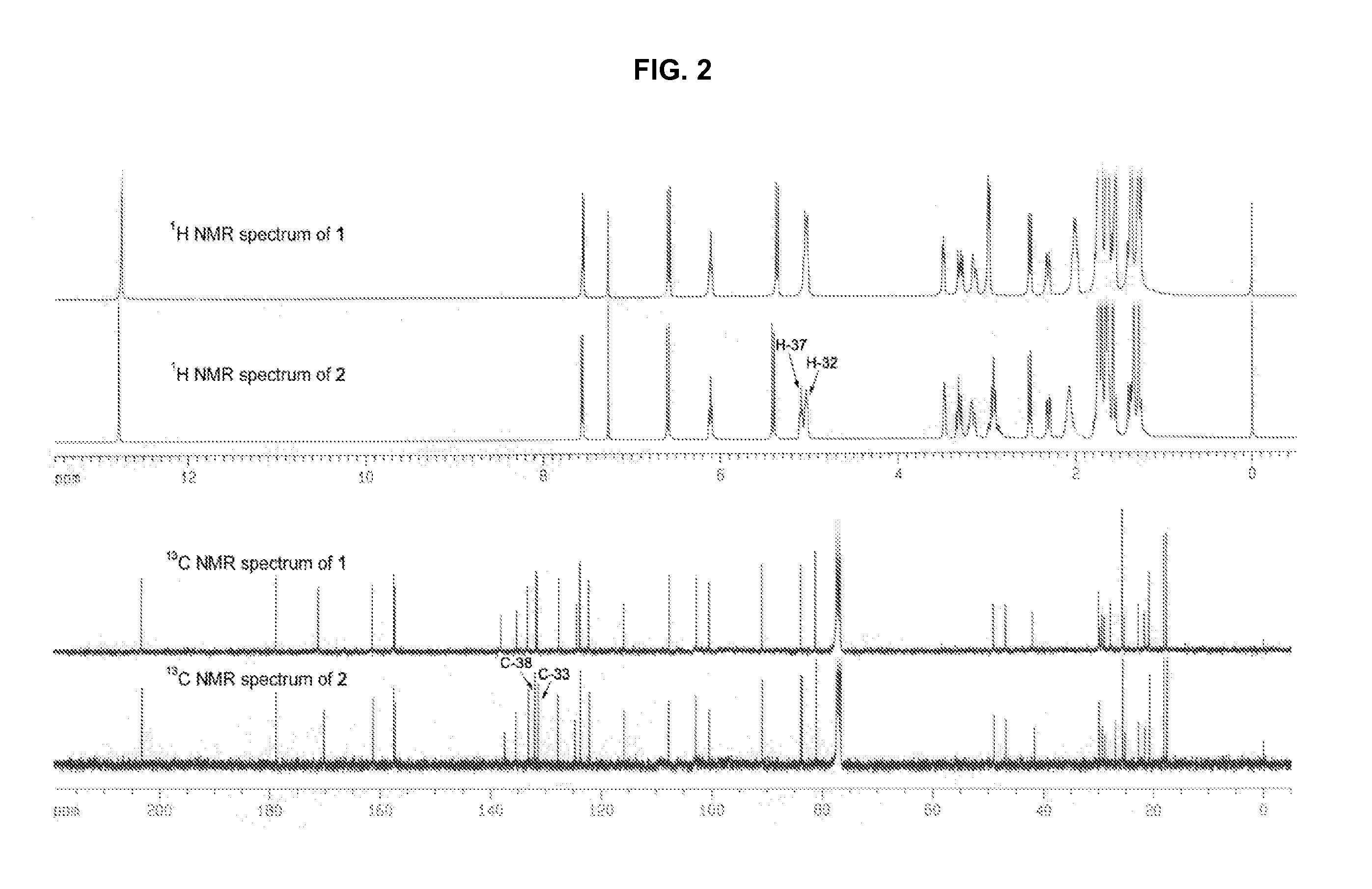Novel compounds from garcinia hanburyi, their use in treating cancer and method of separating epimers thereof
a technology of garcinia hanburyi and compounds, which is applied in the field of new compounds from garcinia hanburyi, their use in treating cancer and the method of separating epimers thereof, can solve the problems that mdr in cancer cells is a significant factor in the failure of chemotherapy in many patients, and achieves the effect of little inhibitory
- Summary
- Abstract
- Description
- Claims
- Application Information
AI Technical Summary
Benefits of technology
Problems solved by technology
Method used
Image
Examples
example 1
R- and S-Epimers of Gambogic Acid
(A) Isolation and Identification
[0013] The resin (0.1 g) of Garcinia hanburyi was purchased from National Institute for the Control of Pharmaceutical and Biological Products (NICPBP), P. R. China. A voucher specimen (CMS-0283) is deposited in the Herbarium of Hong Kong Jockey Club Institute of Chinese Medicine, Hong Kong, China.
[0014] The resin (90 mg) was dissolved in 2 mL acetone, and loaded on the preparative HPLC system (Agilent 1100, Alltima C18, 10μ, 22×250 mm) to give GA. The mobile phase was MeOH / 0.1% H3PO4 (90:10). The flow rate was 1 mL / min. UV detection wavelength was set at UV 360 nm. After the isolation of GA with prep-HPLC, the GA fraction was condensed to remove most of CH3CN, and the condensed acidified solution was diluted with a large amount of water and loaded on a Sephadex LH-20 CC to remove the acid by eluting with H2O. The subsequent Me2CO elution was condensed to dry, and GA was obtained (35 mg). In the HPLC / ESIMS analysis,...
example 2
30-Hydroxygambogic Acid and 30-Hydroxyepigambogic Acid
(A) Isolation and Identification
[0017] Plant Materials: The resin of Garcinia hanburyi was purchased in Guangzhou, P. R. China. A 5 voucher specimen (CMS-0283) was deposited in the Herbarium of Hong Kong Jockey Club Institute of Chinese Medicine, Hong Kong, China.
[0018] Extraction and Isolation: The resin (1 g) was dissolved in 10 mL acetone, and loaded on the preparative HPLC system (Agilent 1100, Alltima C18, 10μ, 22×250 mm) to give the mixture (40 mg, tR=8.5 min). The mobile phase was MeOH / 0.1% H3PO4 (90:10). The flow rate was 1 mL / min. UV detection wavelength was set at UV 360 nm. The isolated mixture was further loaded on C8 column (Alltima C8, 5μ, 9.2×250 mm) eluted with CNCH3 / 0.1% acetic acid / 50% 1,4-dioxan (65:25:10) to yield compound 1 (6 mg) and compound 2 (8 mg), which was subsequently identified as 30-hydroxygambogic acid and 30-hydroxyepigambogic acid, respectively.
[0019] 1D and 2D NMR spectra: Brucker AM-400 an...
example 3
Isogambogic Acid And Isoepigambogic Acid
[0024] This pair of epimers was isolated in the same way as above described. Specifically, the resin (90 mg) was dissolved in 2 mL acetone, and loaded on the preparative HPLC system (Agilent 1100, Alltima C18, 10μ, 22×250 mm) to give GA. The mobile phase was MeOH / 0.1% H3PO4 (90:10). The flow rate was 1 mL / min. UV detection wavelength was set at UV 360 nm. After the isolation with prep-HPLC, the fraction (isogambogic acid and epiisogambogic acid) was condensed to remove most of CH3CN, and the condensed acidified solution was diluted with a large amount of water and loaded on a Sephadex LH-20 CC to remove the acid by eluting with H2O. The subsequent Me2CO elution was condensed to dry, and the mixture of isogambogic acid and epiisogambogic acid was obtained (35 mg). In the HPLC / ESIMS analysis, the mixture presented as one peak (m / z 628) on C18 column (Alltima C18, 5μ, 4.6×250 mm) eluted with CH3CN / 0.1% acetic acid (90:10). However, two completel...
PUM
| Property | Measurement | Unit |
|---|---|---|
| Percent by mass | aaaaa | aaaaa |
| Percent by volume | aaaaa | aaaaa |
| Percent by volume | aaaaa | aaaaa |
Abstract
Description
Claims
Application Information
 Login to View More
Login to View More - R&D
- Intellectual Property
- Life Sciences
- Materials
- Tech Scout
- Unparalleled Data Quality
- Higher Quality Content
- 60% Fewer Hallucinations
Browse by: Latest US Patents, China's latest patents, Technical Efficacy Thesaurus, Application Domain, Technology Topic, Popular Technical Reports.
© 2025 PatSnap. All rights reserved.Legal|Privacy policy|Modern Slavery Act Transparency Statement|Sitemap|About US| Contact US: help@patsnap.com



